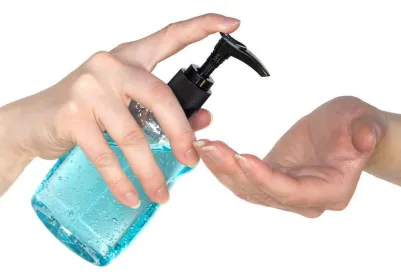On December 10, 2020, the U.S. Environmental Protection Agency (EPA) announced a new policy that will allow registrants of antimicrobial pesticide products voluntarily to disclose all inert ingredients more efficiently in response to the request of retailers, states, and industry.
Registrants who wish to disclose all inert ingredient can choose to do so in three ways under the new policy:
- On the product label as part of the full ingredient statement or on the product’s back or side panel with a referral to the full ingredient statement;
- On a website referenced on the product label; or
- On a website that is not directly linked to the product label.
EPA states that it will allow registrants to use alternate nomenclature to disclose inert ingredients. This policy is effective as of January 16, 2021.
EPA states that there is no statutory or regulatory requirement to identify inert ingredients in the ingredient statement, except when EPA determines that such inert ingredients may pose a hazard to humans or the environment. EPA states that if EPA determines an inert ingredient may pose a hazard, EPA may determine that the name of the inert ingredient must be listed in the ingredient statement on a case-by-case basis for either risk-based or hazard-based reasons. Examples include the following ingredients:
- Petroleum distillates, xylene, or xylene range aromatic solvents > 10%;
- Sodium nitrate > 0.1%; or
- Inert ingredients of toxicological concern (formerly known as “List 1 Inerts”).
EPA’s long-standing policy, as stated in its Label Review Manual, has been that “if a registrant wants to list a particular inert ingredient in the ingredient statement, the registrant should list all inert ingredients directly below the ingredient statement in descending order by weight. A partial listing on the label could be misleading.” EPA’s new policy applies to voluntary identification of inert ingredients using alternate nomenclature and not to cases where EPA directs registrants to list particular inert ingredients because of risk-based or hazard-based reasons.
EPA states that beginning December 15, 2020, the Office of Pesticide Programs (OPP) will review antimicrobial pesticide applications for voluntary inert ingredient disclosure. Under this new process, EPA states that if a registrant chooses to utilize alternate chemical nomenclature on its product labeling, the registrant must resubmit the Confidential Statement of Formula (CSF) containing the inert ingredient as approved on the existing formulation as well as the alternate chemical nomenclature. EPA requires that a “crosswalk” between the approved nomenclature of the CSF and the alternate nomenclature be provided with the registrants’ non-Pesticide Registration Improvement Extension Act (PRIA 4) application, which will fall under a 90-day review.
If registrants choose to use alternate nomenclature, EPA encourages using the following sources:
- EPA Inerts List;
- International Union of Pure and Applied Chemistry (IUPAC);
- Chemical Abstracts Service (CAS); or
- Consumer Product Ingredient Database Directory.
If a registrant chooses to disclose voluntarily inert ingredients on the label, the registrant should list all of the inert ingredients directly below the ingredient statement in descending order by weight, so that the list does not interfere with the required labeling information. If space is limited, however, to avoid crowding of required labeling information, a referral statement may be used directing the reader to the back or side panel for the full list of inert ingredients in descending order by weight. The referral statement should be placed directly below the ingredient statement with an asterisk or some other equivalent symbol connecting the “Inert Ingredients” or “Other Ingredients” heading in the ingredient statement with the full list of inert ingredients placed on the back or side panel of the label. For example, an acceptable referral statement is “*See back panel for complete inert ingredient statement,” and acceptable corresponding text on the back panel is “*Inert Ingredients: Inert A, Inert B., etc.”
When registrants choose to add a website address or quick response (QR) code to their labeling that leads to inert ingredient information, EPA asks that registrants, in a cover letter transmitting the labeling amendment application, self-certify that the inert ingredient information provided on the registrant’s website(s) and in other marketing materials is consistent with the information provided on the latest approved CSF.
EPA states that registrants do not need to amend its their master label or notify EPA before adding an inert ingredient statement to a website, provided that the site is not referenced on the product label. In such cases, the application process outlined below does not apply.
EPA states that no other actions should be included with inert ingredient disclosure applications. The following information is required to be included in the application:
- Applications to add alternate nomenclature to the label must:
- Crosswalk link the current CSF nomenclature to any alternate nomenclature as confirmation that the current CSF nomenclature and alternate nomenclature are synonyms of each other (the exact same inert ingredient). EPA provides a template spreadsheet for the alternate nomenclature crosswalk to link the current CSF nomenclature to any alternate inert ingredient nomenclature.
- Identify in the cover letter the proposed changes to the alternate nomenclature on product labels and CSFs, the revised CSF (which includes the current and alternate nomenclature) and master label with changes highlighted.
- For applications to add currently approved nomenclature to the label registrants should include with the application a cover letter identifying the proposed change(s) on product labels and master label with changes highlighted, including the following self-certification statement: “The inert ingredients voluntarily disclosed in the labeling for EPA Registration No. [add registration number], are accurate for the EPA-registered product listed above. No changes to the product formulation have been made. I certify that no other changes have been made to the labeling of this product. I understand that it is a violation of 18 U.S.C. 1001 to willfully make any false statement to EPA. I further understand that if the information I have provided is misbranded as defined in section 2(q) of FIFRA, 7 U.S.C. 136(q), this product may be in violation of FIFRA and EPA may pursue enforcement actions under sections 12 and 14 of FIFRA, 7 U.S.C. 136(j) and 136(l).”
- For applications to add or change a website or QR code to include inert information, applicants must include a cover letter that identifies the proposed change(s) on product labels and master label with changes highlighted, including the following self-certification statement: “The inert ingredients voluntarily disclosed in the labeling for EPA Registration No. [add registration number], are accurate for the EPA-registered product listed above. No changes to the product formulation have been made. I certify that no other changes have been made to the labeling of this product. I understand that it is a violation of 18 U.S.C. 1001 to willfully make any false statement to EPA. I further understand that if the information I have provided is misbranded as defined in section 2(q) of FIFRA, 7 U.S.C. 136(q), this product may be in violation of FIFRA and EPA may pursue enforcement actions under sections 12 and 14 of FIFRA, 7 U.S.C. 136(j) and 136(l).”
According to EPA, the scope of this policy is currently limited to antimicrobial pesticide products. EPA states that it may consider expanding to conventional pesticide and biopesticide products in the future.
Additional information is available here.





 />i
/>i

